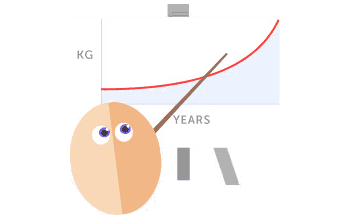Thank you all for your answers to my question. I like to learn stuff!!
Log in to view your messages, post comments, update your blog or tracker.
22 posts
Page 2 of 2
Just to add more confusion some are advocating the number of LDL particles as the best predictor (also some mention of IF near the end)
http://articles.mercola.com/sites/artic ... n=20130428
Still, as said earlier, the ratio test is the most you're likely to get measured right now, and as I posted mine changed dramatically (40%), so I'm sure there's plenty of biochemical changes behind that
http://articles.mercola.com/sites/artic ... n=20130428
Still, as said earlier, the ratio test is the most you're likely to get measured right now, and as I posted mine changed dramatically (40%), so I'm sure there's plenty of biochemical changes behind that
PaulM wrote: Just to add more confusion some are advocating the number of LDL particles as the best predictor
number and size are related - for a given LDL cholesterol level more particles means smaller particles.
carorees wrote: Perhaps it doesn't matter, thinking about it, because one could say that the high fat/lower carb diet was more effective than the low fat/higher carb diet, so if we were to give advice to someone wanting to know how to improve their cholesterol, we could say, keep carbs down to 40% and fats up to 45% of calories?
Caroline - just to raise this issue again because I am trying to get my head around the maths - you mention that to improve cholesterol keep carbs to 40% and fats (full?) to 45% of calories so the remaining 15% is from protein at .8 grams per kilogram?
Just concerned as my Fasting cholesterol was shown as 5.5 Tg 1.00 HDL 1.6 and LDL 3.4 so need to drop my LDL but am concerned as to whether I should just wait for my weight to show a benefit or be more proactive with my food.

(I rarely eat processed food, don't use sugar - no soft drinks/fruit juice ; get confused about whether I should use full fat milk for my homemade yoghurt or half full fat half low or skim. Glass of wine on weekends; lots of vegetables and love fruit. Have always eaten full grain bread etc., and although eat meat only have small portions.)
May this should be in another forum but was checking on LDL posts. Please move if in wrong place.
Hi cmce, thanks for posting here because I had missed this interesting topic until now!
The Varady results suggest that it doesn't matter whether you are following a higher- or lower- fat diet, it is the alternate day fasting (ADF) regime that improves the LDL cholesterol profile.
It does not improve the amount of HDL 'good' cholesterol, nor does it reduces the amount of LDL (traditionally 'bad'), but it improves the proportion of LDL that is pattern A which are bigger fluffier particles and now considered safer than pattern B which are still bad. A standard cholesterol test such as your GP might perform will not detect the proportions of pattern A and pattern B unfortunately!
Your Total/HDL ratio is 3.6 which seems like a good result to me anyway, I don't think (please others correct me if wrong) that the absolute level of LDL at 3.4 should be a concern. It seems possible in any case (based on the Varady results) that as a regular faster you may already have a good proportion of 'light buoyant' Pattern-A in your LDL.
(The abstract suggests in fact that the lower-fat diet group did do slightly better in improving their LDL profile: 8-14% improvement compared with 6-10% for the higher-fat group, but the researchers presumably didn't consider the difference significant.)
By the way I don't think Varady is a high-fat or paleo diet proponent. The conclusion she draws is not that we should go high-fat but that we don't need to go low-fat...
The Varady results suggest that it doesn't matter whether you are following a higher- or lower- fat diet, it is the alternate day fasting (ADF) regime that improves the LDL cholesterol profile.
It does not improve the amount of HDL 'good' cholesterol, nor does it reduces the amount of LDL (traditionally 'bad'), but it improves the proportion of LDL that is pattern A which are bigger fluffier particles and now considered safer than pattern B which are still bad. A standard cholesterol test such as your GP might perform will not detect the proportions of pattern A and pattern B unfortunately!
Your Total/HDL ratio is 3.6 which seems like a good result to me anyway, I don't think (please others correct me if wrong) that the absolute level of LDL at 3.4 should be a concern. It seems possible in any case (based on the Varady results) that as a regular faster you may already have a good proportion of 'light buoyant' Pattern-A in your LDL.
(The abstract suggests in fact that the lower-fat diet group did do slightly better in improving their LDL profile: 8-14% improvement compared with 6-10% for the higher-fat group, but the researchers presumably didn't consider the difference significant.)
By the way I don't think Varady is a high-fat or paleo diet proponent. The conclusion she draws is not that we should go high-fat but that we don't need to go low-fat...
I agree with Dominic, your ratio is fine, nothing to worry about. I'd use full fat milk for your yogurt if you prefer the taste...that's what I use!
Thank you both Dominic and Caroline for your replies. Never having investigated this aspect before, until I joined this forum I was unaware of the fact that LDL particles were not all the same, although was aware that standard blood tests do have limitations. My concern with reading this thread was that it appears that several posters have found factors in their cholesterol testing had increased with fasting, although need to go back and re-read to see the actual breakdown of their figures.
22 posts
Page 2 of 2
| Similar Topics |
|---|
Who is online
Users browsing this forum: No registered users and 1 guest





